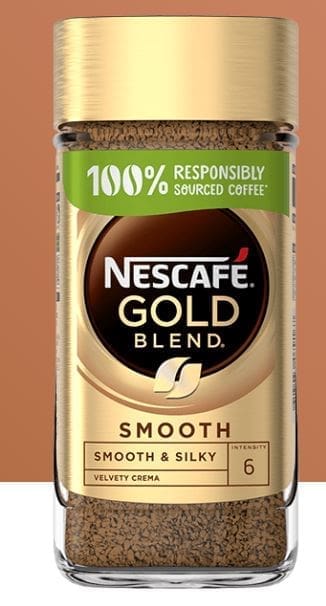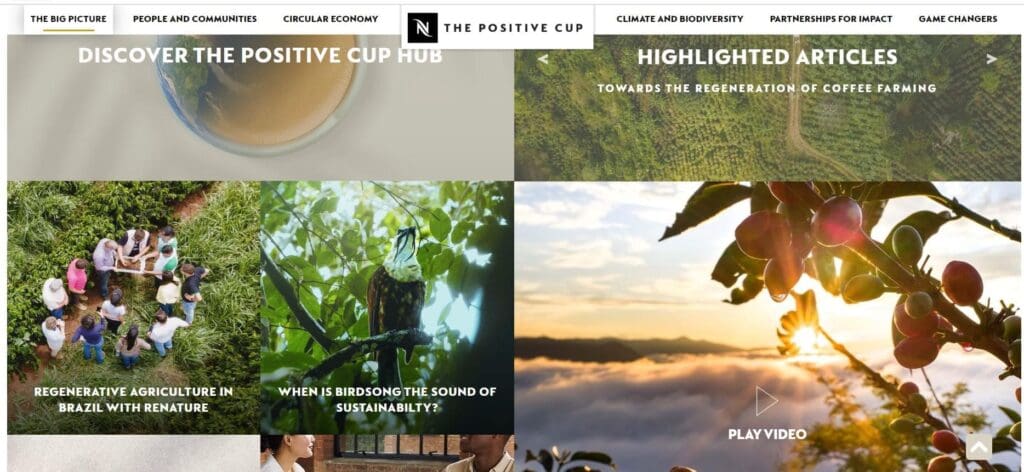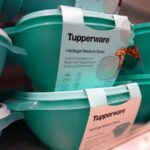In times of inflationary pressure, consumers’ might turn their backs on coffee shops and opt for both value and premium formats. A rise in usage of instant coffee and mixes provide money-saving value options for consumers, but are posing a threat to coffee shops, as people visit them less often to save money.
How can coffee brands tap into arising opportunities resulting from this consumer behaviour and what can coffee shops do to remain relevant? Mintel’s research on coffee marketing reveals that, ultimately, familiarity remains the key purchase driver, with brand equity, health, and indulgent claims helping unlock consumer spending.
How is the Coffee Industry Reacting to Consumer Needs?
With rising inflation and strained budgets, people are looking to get the coffee shop experience at home with value formats and certain blends that replicate barista coffee. Instant coffee and mixes are the perfect answer for coffee lovers on a bargain hunt with over half of coffee consumers drinking instant coffee at home in the UK.
While innovation share for instant coffee and mixes has remained steady on a global scale over the last year, concentrated coffee is also climbing the coffee trends ladder, as it is becoming increasingly known for its value per cup and drink versatility.
While this is good news for coffee brands, this raises red flags for coffee shops. The coffee shop industry has already undergone immense pressure during the pandemic while it was subjected to constant closures. Now, coffee shops are, again, feeling the heat of the cost of living crisis.
To appeal to their customers during an economic downturn, coffee shops must emphasise the social and indulgence aspects associated with enjoying a cup of coffee at a café while reading a book or chatting with friends. Selling the experience of drinking coffee at a coffee shop as hard or even impossible to replicate at home, is what makes them stand apart from coffee brands, selling their barista and coffee shop inspired blends.
Visit Mintel Store for cutting-edge consumer research
Look Familiar?
Coffee consumer trends show that, during financially uncertain times especially, a lot of coffee drinkers are attracted by brand familiarity. Top-performing products on purchase intent in 2022 and 2023 show the strength of brand equity in winning over consumers. An example of a trusted brand from Mintel’s coffee trends analysis is Nescafé, whose innovative Gold Smooth Soluble Coffee blend shows a purchase intent of 46% with consumers who have purchased Nescafé before and consider it a trusted brand.

Nescafé’s Smooth Gold Blend. Source: nescafe.com
However, consumers also continue to seek fresher, more premium coffee at home through beans for that extra kick of energy. In the UK, 55% of coffee consumers agree that premium coffee is an affordable luxury and they are willing to pay more for such premium formats. The lipstick effect – consumers’ willingness to buy less costly luxury goods during an economic downturn – is something that coffee brands and coffee shops can tap into and use to their advantage by offering such premium formats that appeal to their customers.
The Caffeine Reduction Trend
An increased awareness of health, including concerns over the impact of caffeine on sleep and mood is causing the caffeine reduction trend, and thus, consumers are cutting down their caffeine intake.
This results in 39% of coffee drinkers actively trying to reduce their caffeine intake, causing the coffee and coffee shop industry to face new challenges. On the bright side, most coffee drinkers prefer to cut down on their coffee intake rather than switch to decaffeinated options.
Nevertheless, with this in mind, now is the time to boost investment in decaf coffee and unlock its huge growth potential. But, to make the most of this growth potential, it will be essential to overcome any concerns around the decaffeination process, e.g. many UK coffee consumers would be interested in a product that combines ‘the best of both worlds’ through low-caffeine options, which are currently rare in the UK coffee market. Moreover, many of those who drink/buy decaf coffee would like to see a wider choice of products in this segment. Even those who aren’t opting for decaf coffee yet (36%) would appreciate a wider selection in this segment indicating that innovation in this area is well-poised to attract new users.
Why People Will Remain Both the Ultimate Challenge and Answer for Sustainable Coffee
Although sustainability concerns are gaining traction, and environmental initiatives draw consumer interest, the majority of coffee drinkers are not willing to try lab-grown coffee.
The main purchase drivers for coffee remain familiarity and indulgence. Therefore, it is not surprising that consumers hold reservations towards sustainable coffee innovation, such as lab-grown coffee. The goal for coffee brands is to combine both familiarity and indulgence with sustainable practices. Investments in solutions that benefit the Earth and consumers alike, e.g. climate resilient beans, will be key in aligning consumer demand with planetary health.

For example, Nescafé, who are considered a trusted brand by consumers, have dedicated an entire part of their website to sustainable coffee, communicating to their consumers what sustainable sourcing means and how their coffee is farmed. Source: sustainability.nespresso.com
Why reusable cups provide opportunities for sustainability without compromising on taste: Despite consumer awareness around plastic pollution, convenience is still at the top of people’s minds, thus maintaining the popularity of takeaway coffee. Bring-your-own-cup schemes are not gaining enough traction, as always having your own cup on hand is not viewed as convenient.
45% of consumers, however, like to participate in reusable cup schemes that some coffee shops offer, finding it more convenient. 16-34 year olds, in particular, respond well to reusable cup schemes and are likely to gravitate away from bringing their own cups in favour of a cup share scheme.
How are Customers Buying, Ordering, and Consuming Coffee?
Sitting In vs. Taking Away
After two years of on and off coffee shop closures due to the COVID-19 pandemic, in-store participation is back on track as social coffee drinking occasions outside the home are picking up again along with spontaneous stops at coffee shops on the way to work.
Despite having access to a greater range of takeaway options, the latest coffee shop trends suggest that the proportion of consumers who purchased drinks in-store rose to nearly 90% in October 2022. This suggests that while there are more ways to order and access coffee shop drinks, the vast majority of consumers prefer an in-person experience that involves buying drinks from coffee shops.
People’s urge to return to in-person drinking occasions, and their in-person ordering preference emphasise the coffee marketing opportunities for coffee shops to sell the café experience they can offer along with their products.
More than half of Britons buy drinks from coffee shops, with most of the usage being driven by 16- 44 year olds and city-dwellers.
Another reason for a strong return to in-person ordering, is the fact that most coffee shop visits happen spontaneously, and are usually not an activity planned for in advance. Moreover, brick-and-mortar coffee shops offer a greater variety of choice when it comes to different coffee formats and types.
Ordering Coffee Using Apps
The majority of coffee shop consumers continue to order their drinks in person, making it the most frequently used method for ordering. While over 55s prefer the in-shop ordering experience, younger consumers respond well to digital ordering methods. This indicates that coffee marketing should be demographically appropriate to cater to diverse preferences, both in ordering method and formats offered.
Despite interest in alternative ordering methods among younger customers, ordering via apps and websites fell year-on-year. This signals that efforts to drive usage during the pandemic have moderated now that consumers have returned to in-person experiences.
How is the Revenue of the Coffee Shop Industry Being Impacted by Recent Behaviour and Purchase Trends?
The current economic climate and consumers’ financial situation influences coffee trends and usage. Usage of ground coffee and coffee pods, particularly, has dropped among those who are financially struggling, echoing the higher price of these products while demonstrating that coffee shops risk losing customers during the cost-of-living crisis.
Nevertheless, increased engagement with coffee mixes and RTD coffee show that consumers still need their daily dose of energy in the form of caffeine, but are seeking it at a lower price point. The small rise in usage of coffee mixes in 2022 as well as the increased engagement with RTD coffee is driving booming sales in this segment, creating more competition in the coffee (shop) market.
This rise in mixes and RTD coffee threatens coffee shop industry growth, and operators will have to redefine their value for money and defend their position and products, for example, by emphasising the coffee shop experience of coffee consumption and by tapping into pent-up demand following two years of closures.
Are There Any Consumer Behaviours that Can Help Predict Forthcoming Coffee and Coffee Shop Trends?
Private label’s newly competitive quality perceptions are setting the standard during the cost-of-living crisis, and brands will have to follow their lead while consumers remain sceptical of new functional benefits and prefer evolved energy messaging for work and wellness.
Similarly, coffee shops see themselves threatened by cheaper at-home coffee options that promise a barista coffee experience. Tiered pricing models, ranging from standard to premium blends may appeal to customers.
Usher in a new era of indulgence: Gen Z consumers are increasingly beginning to leverage their spending power, and brands and coffee shops can cater to their iced coffee taste preferences, or with cold brews.
Meanwhile, coffee drinkers remain cautious when it comes to sustainable coffee innovations. To foster growth, beanless brands will have to communicate taste over sustainability, as taste and indulgence remain the most prominent purchase factors for coffee. Here, strengthened scientific research on how fermentation impacts coffee taste offers elevated opportunities for taste note marketing.
Support work and wellness: The pandemic has fundamentally changed work life long-term and people are returning to the office, at least part-time. This means that there is opportunity for coffee shops to cater to on-the-go commuters and to those working from home with high-caffeine RTDs.
To appeal to those seeking to reduce their caffeine intake, brands and operators can offer options that feel personalised to consumers’ desired ‘buzz’. Coffee’s trusted energy function offers opportunity to target the workout space as a way to help consumers manage their stress through exercise, as well as commuters on their way to work.
To find out more about how you can strengthen your brand value and ensure your business’ growth in the coffee shop industry, read on in our UK Coffee Shops Market Report 2022, or explore our wide range of coffee industry related market research.
Sign up here for fresh insights delivered directly to your inbox!








